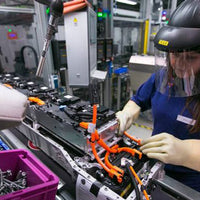AGV (unmanned van) is a subcategory of the industrial robot industry. It is equipped with electromagnetic or optical guidance devices and can travel along specified guidance paths. In practice, the most important use of AGV is transportation. Since Amazon acquired Kiva in 2014 and adopted a large number of mobile robots, domestic enterprises have followed suit, and the Chinese AGV market has also developed rapidly.
AGV is a hardware component of the AGVS (Automated Guided Vehicle System) warehouse robot System. AGVS are mainly composed of three parts: AGV, guidance device (fixed channel, semi-fixed channel, no channel, etc.), and control system (computer control, remote control, manual device, etc.). Through docking with the relevant management system in the warehouse, complete the warehouse operation task.
AGV components: Lithium-ion battery, load handling device, safety device (emergency stop button, lidar, safety PLC, safety speed template), drive device, control device, (command analysis, wireless communication, navigation data processing, image processing, obstacle detection, speed, steering control, power supply, charging control).
Basic requirements for AGV operation: the safety of equipment, charging, and operation; Emergency stop control, the stability of continuous operation, navigation and positioning, the accuracy of signal recognition.
Based on the integration degree of control mode, storage robots can be divided into the following four categories:
The first is the direct control of the operator, such as conventional forklift;
Second, the operator remote control, such as manipulator;
Three is automatic control, booking the path, such as AGVS;
The fourth is automatic control, not pre-path, such as autonomous mobile robots.








0 comments